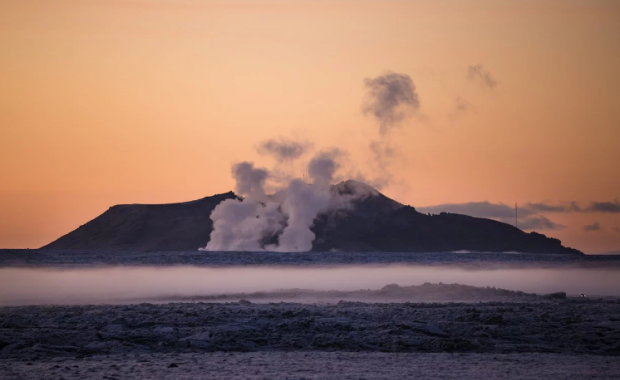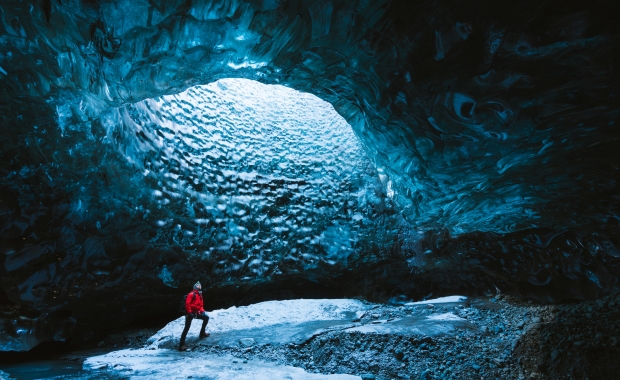The old harbour is the heart of Reykjavík and the catalyst to its formation. The city grew up around the harbour and in the early 20th century it became one of the centers of the Icelandic trawling industry. The harbour area has been transformed in the past decades. It is still one of the most important harbours in Iceland, but in recent years tourism and whale watching have gradually replaced fishing vessels while shops and restaurants have occupied warehouses.
The heart of the city

The excellent natural harbour was no doubt one of the reason the first settler of Iceland, Ingólfur Arnarson, chose to settle in Reykjavík. Nature provided Reykjavík with an excellent harbour. The islands of Engey and Örfirisey, which is connected to the mainland by the Grandi isthmus, proteted the harbour from the waves of the open sea. The modern harbour area is the creation of extensive landfills, and the original shoreline lies roughly where the street Hafnarstræti is today.
A great way to spend the morning or afternoon, visiting stores, cafés and museums which provide an glimpse into Icelandic history and culture and an opportunity to sample some of the best of Icelandic culinary culture.
Harpa concert hall
A good place to start out is Harpa Concert Hall with it's distinctive glass dome designed by Icelandic artist Ólafur Elíasson. The concert hall, opened in 2011, was originally part of a re-development of the harbour area which would have included the headquarters of the failed Landsbankinn bank and dubbed The World Trade Center Reykjavík.
Read more: Work starts to replace last remaining monument to 2008 crash with a Marriott hotel

The 2008 financial crisis brought these plans to a halt: The empty construction site next to Harpa is all which remains of the planned bank headquarters. A Marriott Hotel is planned for the site, with construction slated to begin in the summer of 2017.
Read more: Bankers Behind Bars: A guided walking tour through the collapse of Iceland's banking system in 2008
Check out the concert schedule or explore the building and its view. Harpa has a restaurant and café, a design store as well as the Iceland Expo Pavillion, an 15 minute 360° film designed for the 2010 World‘s Fair in Shanghai offers a view of Iceland in all its diversity taking viewers on a bird‘s eye tour of waterfalls, volcanoes, villages and hidden valleys.
Kolaportið flea market
Walking from Harpa along the harbour, you might see the Icelandic Coast Guard vessels and the Search and Rescue school ship Sæbjörg which is permanently berthed at Austurbakki pier.

At the north-east corner of the harbour is Kolaportið, the Reykjavík Flea Market. Open on Weekends, the market includes stalls by locals selling stuff from their attic as well as permanent stalls selling books or antiques. You can also stop by the food section, sample fermented shark or buy a bag of stockfish.
Across the street is the hot dog stand Bæjarins Beztu, where you can get the best hot dogs in Reykjavík!
Read more: Guide: The street food of Reykjavík – Not just hot dogs anymore
Modern art and volcanoes
Walking along Tryggvagata street you pass the Reykjavík Art Museum in Hafnarhúsið, a former warehouse and office building. There you will find a standing exhibition of the works of Erró, one of the best known modern artists of Iceland and exhibitions by cutting edge Icelandic and international artists. Next to it is the City Library, and the Reykjavík Museum of Photography. Down the street is modern art gallery i8, Reykjavík‘s most renowned art galleries.
On the corner of Tryggvagata and Geirsgata is the Volcano house, which offers a documentary show with two movies about Iceland‘s volcanoes, running every hour from 10 am to 9 pm as well as a small free exhibiton of Icelandic volcanoes, including a hands-on mineral collection.
The old bait sheds
The old bait and net sheds across the street have taken over by now restaurants and small boutiques selling stores. Several fish restaurants can be found here, including Mar and Sægreifinn and a friendly café Haití.

A strange small solidary building with a clock tower, built as a weighing station and harbour café for fishermen now houses Tommi‘s Burger Joint, a favorite local burger place. Legend has it that the success of Tommi‘s burger joints made it impossible for McDonalds or Burger King to gain a foothold in Iceland.
Center of whale watching
Several whale watching companies operate from the Ægisgarður pier, named after Ægir, the god of the sea, in the old Nordic Ásatrú. Previously the whaling vessels of Hvalur Hf berthed at the pier, now it is the center of whale watching. In 1986
Read more: Fascinating aerial video of the two Icelandic whaling boats sunk by Sea Shepherd in 1986
The Reykjavík Shipyard, Slippurinn is next to the Ægisgarður pier. Most of the shipyard has been torn down, and now ships only come in for painting. The shipyard‘s main building, which housed offices and machine shops has been turned into a hotel, Hotel Marina. The hotel bar, Slippbarinn, serves food and has a good coctail menu and a happy hour.
Grandi area

On the west end of the harbour is the Grandi area. Originally just a narrow isthmus connecting the island of Örfirisey to the mainland, Grandi has been expanded with landfills.
Read more: Here is our guide to Grandi, Reykjavík’s new food district
Originally home to warehouses and industry, including fishing industry, several museums, galleries and exhibits have moved into the area while cafés and small butiques have moved into the bait- and net-sheds along Grandagarður street.
Three museums and a top restaurant
At the corner of Mýrargata and Grandagarður is an old warehouse which houses two exhibits worth visiting and one of Reykjavík‘s best restaurants.
Read more: Matur & Drykkur, serving local Icelandic dishes, gets a shout-out from the Michelin Guide

The Saga Museum is a a vax museum with hands on activities which brings the Icelandic Sagas into life. A second exhibit, Aurora Reykjavík, the Northern Lights Center of Reykjavík is dedicated to the science and mystery of the Northern Lights and the mystery that surrounds them. The restaurant Matur & Drykkur is located in the same building. Next door you will find one of the best museums in Reykjavík, the Maritime Museum.
A large selection of cafés and a microbrewery
Walking along Grandagarður you can stop at any one of several great small cafés which now occupy the old net- and bait-sheds. Check out Valdís ice cream shop and Coocoos nest café.

Across the street is Kaffivagninn diner, a local institution frequented by old fishermen which has recently seen an influx of a younger more hipstery clinentele. Luxury cake shop 17 sortir is the place to stop at for great cakes, and a little further down the street you find Kumiko a cool Japanese Manga styled teahouse.
Marshallhúsið art center
At the end of Grandagarður, across the street from Kumiko is Marshallhúsið, an old herring factory has recently been turned into a gallery and exhibiton space. The house was built in 1948, with counterpart funds from the Marshall plan (hence the name) and remained in operation until the end of the turn of the century.
Now it houses an exhibition space for Nýló, the Icelandic Modern Art Museum, the gallery Kling & Bang and an exhibition space of Ólafur Elíasson, one of Iceland's best known modern artists.
Omnon Chocolate

At the same intersection as Kumiko and Marshallhúsið in the factory and factory store of Omnom Chcocolate, a hand crafted artisan bean-to-bar chocolate manufacturer. Omonom chocolates are unquestionably one of the greatest little luxuries you can get in Iceland
Read more: Icelandic Omnom chocolate one of Vogue UK's little luxuries
Stop by the store and stock up on superb chocolate or sign up for the factory tour.
Þúfa sculpture
At the end of Grandi next to HB Grandi fish processing plant is the sculptue Þúfa, which translates as tussock, a small man made hill, completed in 2013. The sculpture was commissioned by the fishing company HB Grandi and Reykjavík harbour.
The top of the sculpture, which was made by Icelandic artist Ólöf Nordal, offers a great view of the harbour, the islands off the coast and the mountains north of Reykjavík. At the top of the tussock is a small fish-drying shed, bringing together the harbour and Icelandic nature.

The old harbour is the heart of Reykjavík and the catalyst to its formation. The city grew up around the harbour and in the early 20th century it became one of the centers of the Icelandic trawling industry. The harbour area has been transformed in the past decades. It is still one of the most important harbours in Iceland, but in recent years tourism and whale watching have gradually replaced fishing vessels while shops and restaurants have occupied warehouses.
The heart of the city

The excellent natural harbour was no doubt one of the reason the first settler of Iceland, Ingólfur Arnarson, chose to settle in Reykjavík. Nature provided Reykjavík with an excellent harbour. The islands of Engey and Örfirisey, which is connected to the mainland by the Grandi isthmus, proteted the harbour from the waves of the open sea. The modern harbour area is the creation of extensive landfills, and the original shoreline lies roughly where the street Hafnarstræti is today.
A great way to spend the morning or afternoon, visiting stores, cafés and museums which provide an glimpse into Icelandic history and culture and an opportunity to sample some of the best of Icelandic culinary culture.
Harpa concert hall
A good place to start out is Harpa Concert Hall with it's distinctive glass dome designed by Icelandic artist Ólafur Elíasson. The concert hall, opened in 2011, was originally part of a re-development of the harbour area which would have included the headquarters of the failed Landsbankinn bank and dubbed The World Trade Center Reykjavík.
Read more: Work starts to replace last remaining monument to 2008 crash with a Marriott hotel
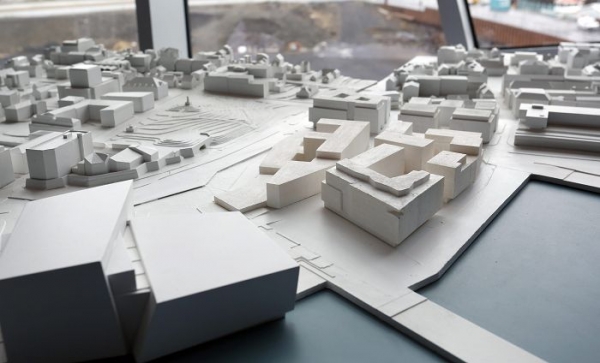
The 2008 financial crisis brought these plans to a halt: The empty construction site next to Harpa is all which remains of the planned bank headquarters. A Marriott Hotel is planned for the site, with construction slated to begin in the summer of 2017.
Read more: Bankers Behind Bars: A guided walking tour through the collapse of Iceland's banking system in 2008
Check out the concert schedule or explore the building and its view. Harpa has a restaurant and café, a design store as well as the Iceland Expo Pavillion, an 15 minute 360° film designed for the 2010 World‘s Fair in Shanghai offers a view of Iceland in all its diversity taking viewers on a bird‘s eye tour of waterfalls, volcanoes, villages and hidden valleys.
Kolaportið flea market
Walking from Harpa along the harbour, you might see the Icelandic Coast Guard vessels and the Search and Rescue school ship Sæbjörg which is permanently berthed at Austurbakki pier.

At the north-east corner of the harbour is Kolaportið, the Reykjavík Flea Market. Open on Weekends, the market includes stalls by locals selling stuff from their attic as well as permanent stalls selling books or antiques. You can also stop by the food section, sample fermented shark or buy a bag of stockfish.
Across the street is the hot dog stand Bæjarins Beztu, where you can get the best hot dogs in Reykjavík!
Read more: Guide: The street food of Reykjavík – Not just hot dogs anymore
Modern art and volcanoes
Walking along Tryggvagata street you pass the Reykjavík Art Museum in Hafnarhúsið, a former warehouse and office building. There you will find a standing exhibition of the works of Erró, one of the best known modern artists of Iceland and exhibitions by cutting edge Icelandic and international artists. Next to it is the City Library, and the Reykjavík Museum of Photography. Down the street is modern art gallery i8, Reykjavík‘s most renowned art galleries.
On the corner of Tryggvagata and Geirsgata is the Volcano house, which offers a documentary show with two movies about Iceland‘s volcanoes, running every hour from 10 am to 9 pm as well as a small free exhibiton of Icelandic volcanoes, including a hands-on mineral collection.
The old bait sheds
The old bait and net sheds across the street have taken over by now restaurants and small boutiques selling stores. Several fish restaurants can be found here, including Mar and Sægreifinn and a friendly café Haití.
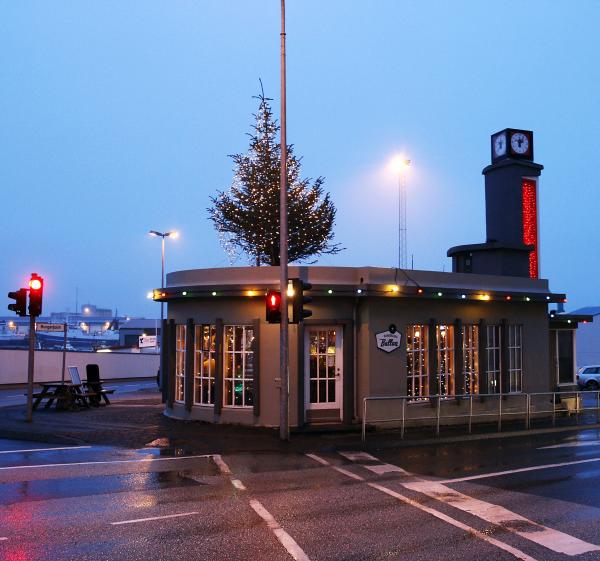
A strange small solidary building with a clock tower, built as a weighing station and harbour café for fishermen now houses Tommi‘s Burger Joint, a favorite local burger place. Legend has it that the success of Tommi‘s burger joints made it impossible for McDonalds or Burger King to gain a foothold in Iceland.
Center of whale watching
Several whale watching companies operate from the Ægisgarður pier, named after Ægir, the god of the sea, in the old Nordic Ásatrú. Previously the whaling vessels of Hvalur Hf berthed at the pier, now it is the center of whale watching. In 1986
Read more: Fascinating aerial video of the two Icelandic whaling boats sunk by Sea Shepherd in 1986
The Reykjavík Shipyard, Slippurinn is next to the Ægisgarður pier. Most of the shipyard has been torn down, and now ships only come in for painting. The shipyard‘s main building, which housed offices and machine shops has been turned into a hotel, Hotel Marina. The hotel bar, Slippbarinn, serves food and has a good coctail menu and a happy hour.
Grandi area
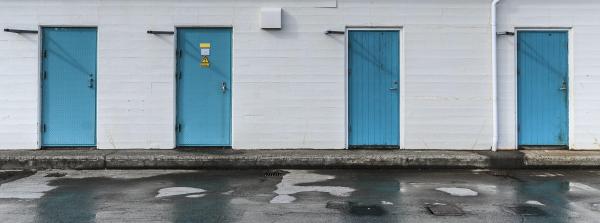
On the west end of the harbour is the Grandi area. Originally just a narrow isthmus connecting the island of Örfirisey to the mainland, Grandi has been expanded with landfills.
Read more: Here is our guide to Grandi, Reykjavík’s new food district
Originally home to warehouses and industry, including fishing industry, several museums, galleries and exhibits have moved into the area while cafés and small butiques have moved into the bait- and net-sheds along Grandagarður street.
Three museums and a top restaurant
At the corner of Mýrargata and Grandagarður is an old warehouse which houses two exhibits worth visiting and one of Reykjavík‘s best restaurants.
Read more: Matur & Drykkur, serving local Icelandic dishes, gets a shout-out from the Michelin Guide
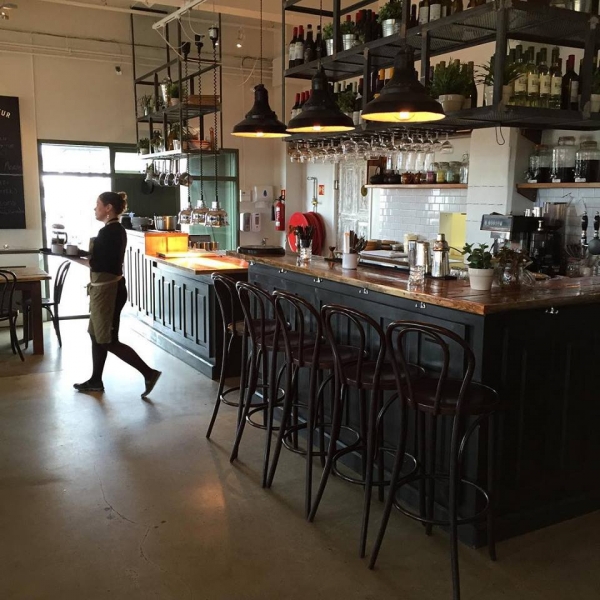
The Saga Museum is a a vax museum with hands on activities which brings the Icelandic Sagas into life. A second exhibit, Aurora Reykjavík, the Northern Lights Center of Reykjavík is dedicated to the science and mystery of the Northern Lights and the mystery that surrounds them. The restaurant Matur & Drykkur is located in the same building. Next door you will find one of the best museums in Reykjavík, the Maritime Museum.
A large selection of cafés and a microbrewery
Walking along Grandagarður you can stop at any one of several great small cafés which now occupy the old net- and bait-sheds. Check out Valdís ice cream shop and Coocoos nest café.

Across the street is Kaffivagninn diner, a local institution frequented by old fishermen which has recently seen an influx of a younger more hipstery clinentele. Luxury cake shop 17 sortir is the place to stop at for great cakes, and a little further down the street you find Kumiko a cool Japanese Manga styled teahouse.
Marshallhúsið art center
At the end of Grandagarður, across the street from Kumiko is Marshallhúsið, an old herring factory has recently been turned into a gallery and exhibiton space. The house was built in 1948, with counterpart funds from the Marshall plan (hence the name) and remained in operation until the end of the turn of the century.
Now it houses an exhibition space for Nýló, the Icelandic Modern Art Museum, the gallery Kling & Bang and an exhibition space of Ólafur Elíasson, one of Iceland's best known modern artists.
Omnon Chocolate
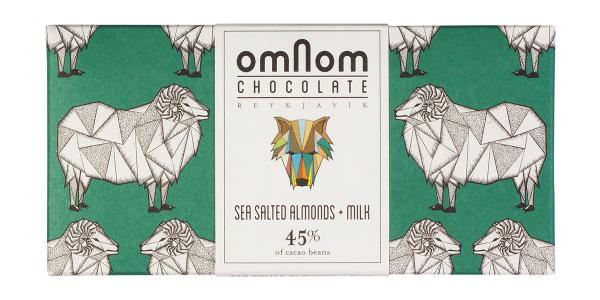
At the same intersection as Kumiko and Marshallhúsið in the factory and factory store of Omnom Chcocolate, a hand crafted artisan bean-to-bar chocolate manufacturer. Omonom chocolates are unquestionably one of the greatest little luxuries you can get in Iceland
Read more: Icelandic Omnom chocolate one of Vogue UK's little luxuries
Stop by the store and stock up on superb chocolate or sign up for the factory tour.
Þúfa sculpture
At the end of Grandi next to HB Grandi fish processing plant is the sculptue Þúfa, which translates as tussock, a small man made hill, completed in 2013. The sculpture was commissioned by the fishing company HB Grandi and Reykjavík harbour.
The top of the sculpture, which was made by Icelandic artist Ólöf Nordal, offers a great view of the harbour, the islands off the coast and the mountains north of Reykjavík. At the top of the tussock is a small fish-drying shed, bringing together the harbour and Icelandic nature.





